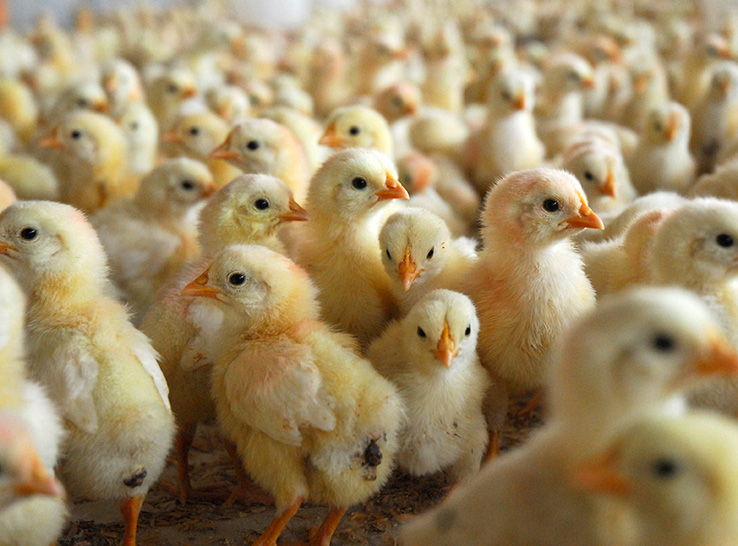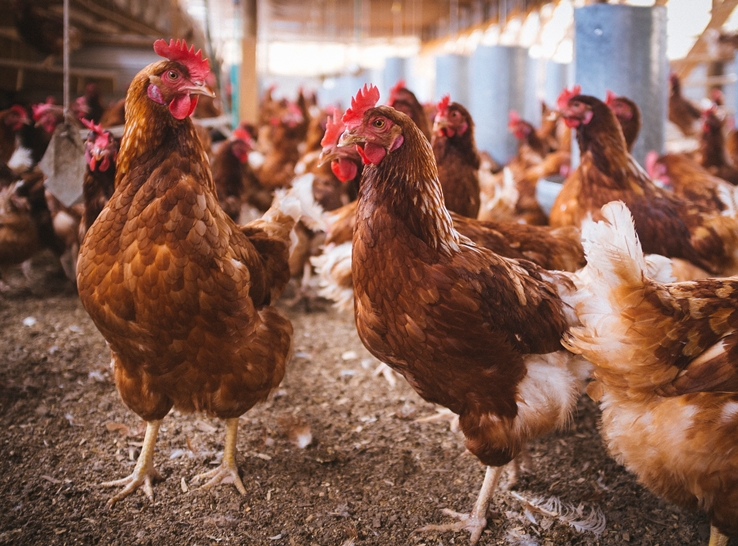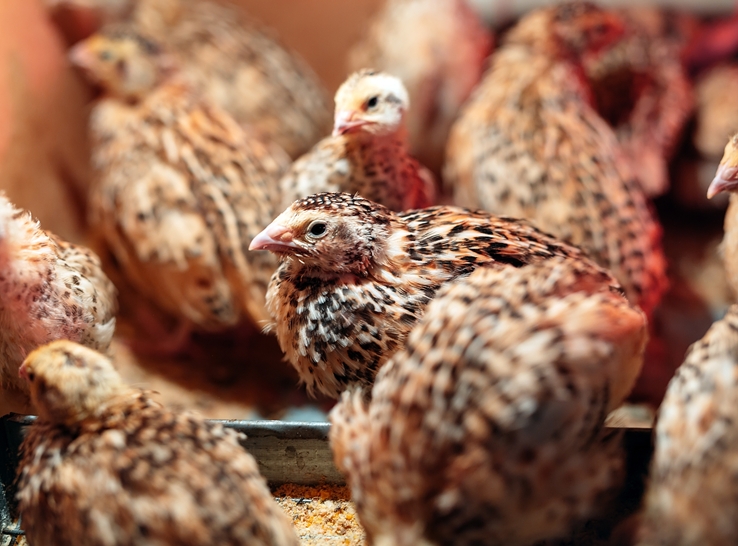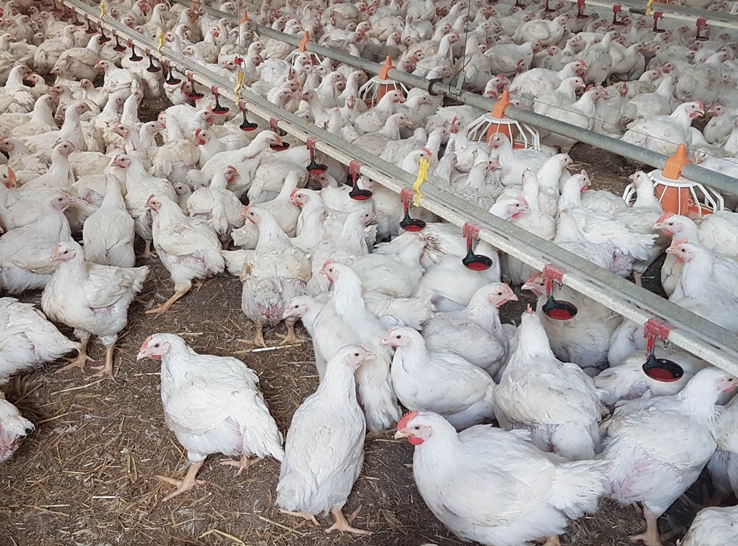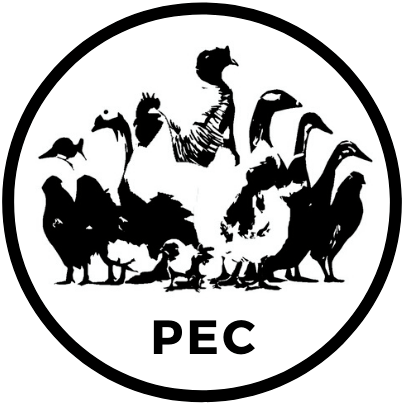By Prafulla Regmi, PhD, University of Georgia
Maintaining low flock mortality is a fundamental indicator of good animal welfare on poultry farms. Conversely, high or rising mortality rates can have serious welfare and economic consequences. In commercial egg operations, mortality is typically monitored daily and tracked weekly, or cumulatively over time. Effective mortality assessment also requires routine identification of underlying causes for the early detection of disease outbreaks and for recognizing management or environmental issues.
While some mortality is expected in all layer flocks, regardless of the housing type or breed, the rate and causes can vary depending on the production system. Cage-free systems may not inherently have higher mortality than cages and experience in managing birds in cage-free systems plays a big role in maintaining low mortality. Each year of experience with cage-free aviaries can reduce cumulative mortality by 0.35–0.65%.1
U.S. cage-free layer population and mortality rates
- As of March 2025, approximately 44% of all laying hens in the U.S. (about 126 million birds) are housed in cage-free systems.2
- Features of cage-free systems that can impact mortality rates include:
- Complex system often incorporating vertical tiers, floor area, nest area, scratch-pads, and perches – increases risks of traumatic collisions and injury
- Large social groups – increases risks of piling and aggressive pecking
- Direct exposure to litter and excreta – increases risks of exposure to pathogens and parasites
- Cumulative mortality in cage-free flocks typically ranges from 5% to 12% and tends to increase as birds age.3
- High mortality rates may prompt earlier depopulation, resulting in economic losses.4
Common causes of mortality in cage-free laying hens
Mortality in cage-free systems can result from a wide range of infectious and non-infectious causes. Understanding these causes is essential for early intervention, improved flock health, and better welfare outcomes.
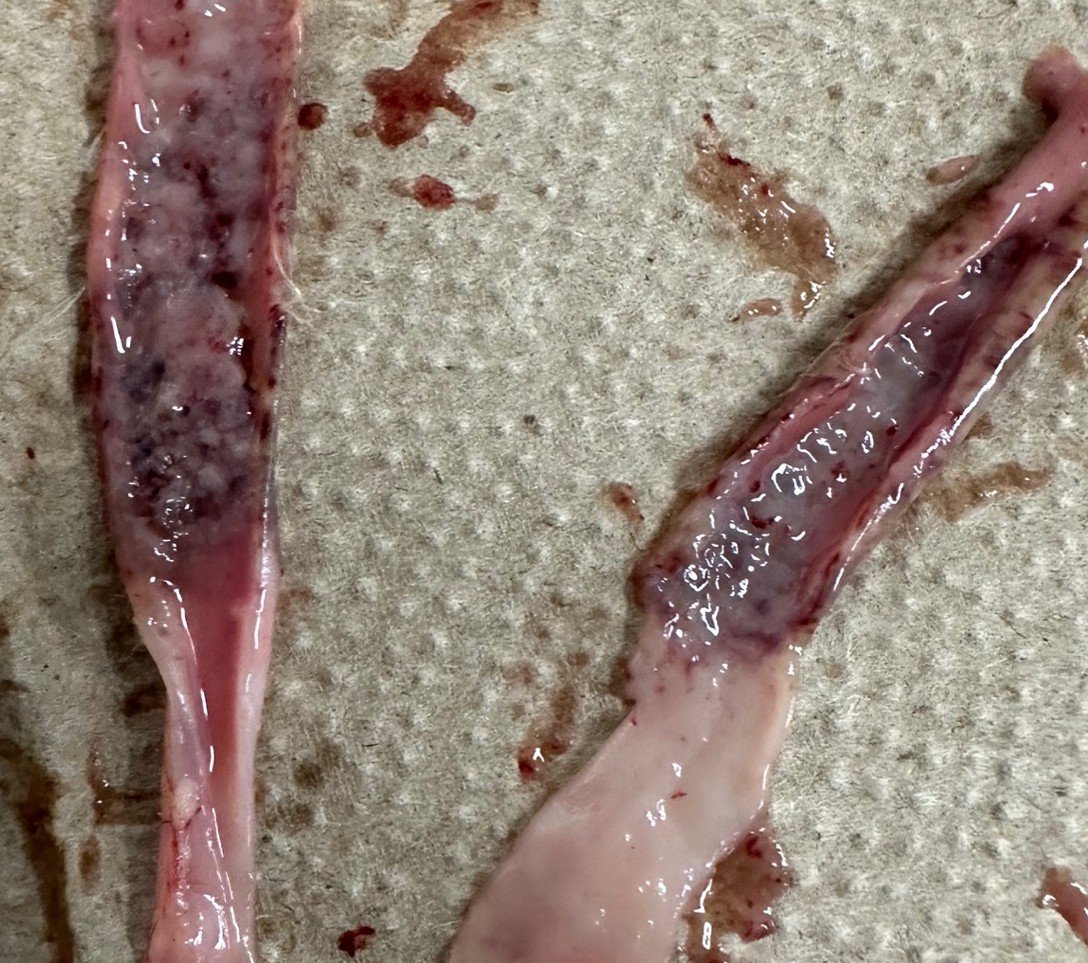
Figure 1: Intestinal lesions caused by experimental Coccidia infection in chicken (Credit: A. Niraula UGA).
Infectious causes
Coccidiosis and Necrotic Enteritis
Coccidiosis is a disease caused by protozoal parasites particularly belonging to the genus Eimeria. Coccidiosis is commonly observed in pullets, even though approximately 95% of pullets in the U.S. are vaccinated against the disease. The live oocyst vaccine requires two to three cycles of multiplication in the bird to establish immunity, which depends heavily on proper litter moisture (25-35%) and temperature (26-30°C) management.5 Inadequate immunity can lead to secondary infections, most notably necrotic enteritis which is caused by Clostridium sp. Coccidiosis and necrotic enteritis contribute to increased mortality, reduced growth, and poor egg production.
E. coli Infections
Escherichia coli is a gram-negative bacterium that can be involved in secondary infections, often in birds with compromised respiratory systems due to high ammonia exposure, Mycoplasma spp., infectious bronchitis, or other viral infections. During egg production, E. coli can cause weekly mortality rates of 0.5% to 4%. A live vaccine is administered during the rearing period to prevent and combat outbreaks.
Fowl Cholera
Fowl cholera is a bacterial disease caused by Pasteurella multocida and is particularly problematic in free-range systems. Vaccines are available and are quite effective in controlling outbreaks. However, unvaccinated flocks can experience mortality rates of up to 5% per day.6 Acute fowl cholera is often characterized by enlarged liver and spleen and hemorrhages around the heart and intestines. In chronic cases, the comb, wattles and sinuses could be swollen.
Spotty Liver Disease
Spotty liver disease is caused by the bacteria Campylobacter hepaticus, especially in cage-free systems and could lead to 1–2% weekly mortality [6]. The outbreaks are often observed during peak laying periods and during warmer months. This disease can cause enteritis and diarrhea in laying hens.
G. anatis Infections
Infections from Gallibacterium anatis, a Gram-negative bacterium, is an emerging problem in cage-free laying hens. Previously, G. anatis was considered a commensal organism and was often isolated from the respiratory and reproductive tracts. More recently, it has been implicated in pathogenic outbreaks and causes lesions similar to E. coli infections, often leading to salpingitis and egg peritonitis (inflammation of the peritoneum). This pathogen exhibits high antibiotic resistance, and no commercial vaccine is currently available.
Infectious Bronchitis
Infectious bronchitis is a viral disease caused by the Infectious Bronchitis Virus (IBV), a coronavirus. IBV infection can lead to false layers, where yolks are released into the abdominal cavity instead of the oviduct, predisposing birds to bacterial infections and contributing to mortality. The virus alone is responsible for approximately 5% mortality. Mortality can increase significantly in instances of secondary bacterial infection.
Salpingitis
Salpingitis is an inflammation of the oviduct, often bacterial in origin with E. coli and similar pathogens mentioned above as major causative bacteria. Salpingitis presents as a distended, firm oviduct with foul-smelling yellow exudate. It is a significant cause of reproductive tract-related mortality.7
Non-infectious Causes
Piling and Smothering
Piling is a behavioral issue where birds cluster in a tight space, often due to fear or environmental stress. Piling events that cause suffocation and mortality are termed as smothering. It is more common in certain layer strains, particularly brown strains and some white strains. A uniform environment with consistent light intensity, temperature, and litter depth can help reduce piling incidents. For more details on piling and smothering please check our previous article here.
Cannibalism
Cannibalism can occur in some flocks and pose a serious welfare concern. Post-mortem signs include scabbed skin and facial swelling likely due to forceful pecks directed towards the head. Some contributing factors that can exacerbate the severity of the issue include inadequate beak trimming, high light intensity, high stocking density, poor feather cover, stress from nest competition in aviaries, and genetic predisposition among some strains. For details on injurious pecking behavior in poultry, please refer to our previous article here.
Fatty Liver Hemorrhagic Syndrome (FLHS)
FLHS is a major non-infectious cause of mortality, accounting for up to 11% of deaths in older hens. It results from excessive fat accumulation in the liver, leading to hemorrhage and death. Risk factors include high-energy diets and persistently elevated estrogen levels. Affected livers appear yellow, enlarged, and fragile, often with visible blood clots or blood pooling in the abdominal cavity.8
Hypocalcemia
Hypocalcemia refers to a low circulating levels of calcium in hens that are actively producing eggs. During necropsy, this condition is characterized by the presence of a membrane-bound egg in the shell gland, often without a shell. It lacks obvious gross lesions or clinical signs but can lead to sudden death.
Underconditioning/Emaciation
Birds suffering from chronic health issues or poor nutrition may become emaciated, showing signs such as a protruding keel bone, loss of breast muscle mass, and minimal abdominal fat. This condition often reflects long-term systemic issues.
Summary
- Experience in managing cage-free systems effectively plays a key role in keeping mortality low.
- Mortality in cage-free laying hens can occur from both infectious and non-infectious challenges. Mortality from infectious origins is worsened by inadequate vaccination, poor biosecurity, and stress. Non-infectious causes are typically linked to behavior, nutrition, and management.
- Keel bone fractures are common findings in cage-free hens during necropsy examinations, but they have not been confirmed as a primary cause of death.
References
- Schuck-Paim, C., Negro-Calduch, E., & Alonso, W. J. (2021). Laying hen mortality in different indoor housing systems: A meta-analysis of data from commercial farms in 16 countries. Scientific Reports, 11, 3052. https://doi.org/10.1038/s41598-021-81868-3
- USDA. Agriculture Marketing Service (AMS), Monthly USDA Cage-Free Shell Egg Report. https://www.ams.usda.gov/mnreports/pymcagefree.pdf. Accessed June, 2025.
- Weeks, C. A., Lambton, S. L., & Williams, A. G. (2016). Implications for welfare, productivity and sustainability of the variation in reported levels of mortality for laying hen flocks kept in different housing systems: A meta-analysis of ten studies. PLoS ONE, 11(1), e0146394. https://doi.org/10.1371/journal.pone.0146394
- USDA. (2014). Layers 2013 Part I: Reference of Health and Management Practices on Table-Egg Farms in the United States.
- Bruzal, J. J. (2022). Coccidiosis control in broiler breeders with the use of vaccines. Ross Technical Note (Aviagen Publication).
- Gingerich, E. (2018). Disease challenges of cage-free egg production (J. Dreyer, Ed.). WattPoultry.
- Fulton, R. M. (2017). Causes of normal mortality in commercial egg-laying chickens. Avian Diseases, 61(3), 289–295.
- Gretarsson, P., Kittelsen, K., Moe, R. O., Vasdal, G., & Toftaker, I. (2023). End of lay postmortem findings in aviary housed laying hens. Poultry Science, 102(2), 102332. https://doi.org/10.1016/j.psj.2022.102332
To view all issues of Poultry Press, click here.
Editor’s note: Content on Modern Poultry’s Industry Insights pages is provided and/or commissioned by our sponsors, who assume full responsibility for its accuracy and compliance.

